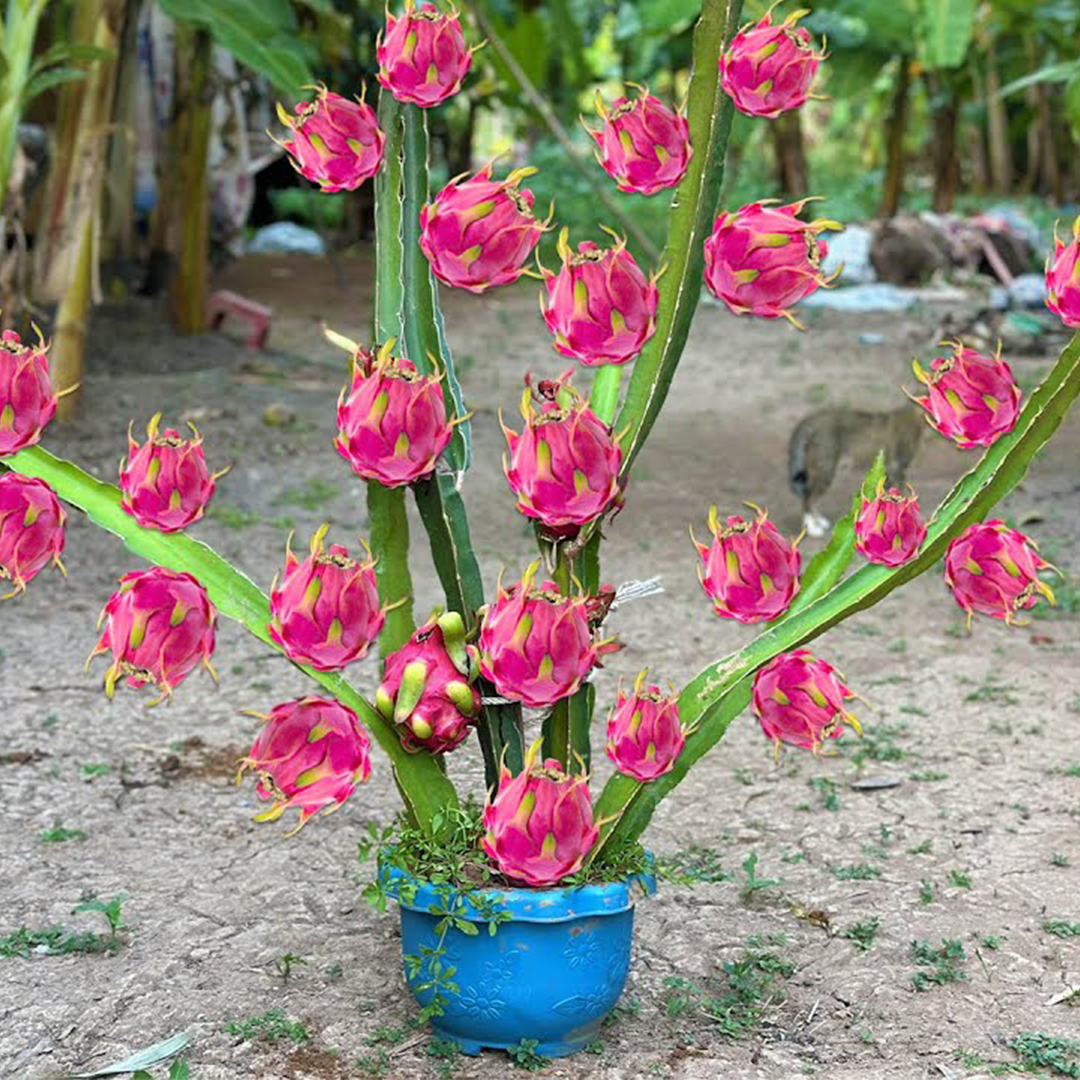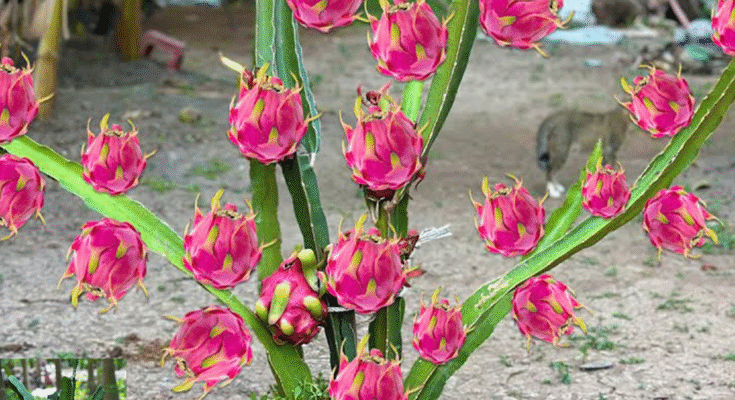A New Way of Propagating Dragon Fruit to Produce a Lot of Fruit in a Short Time
Dragon fruit, also known as pitaya, is one of the most popular tropical fruits in many countries due to its exotic appearance, refreshing taste, and high market demand. Traditionally, dragon fruit is propagated by using cuttings from mature stems, which is a reliable but relatively slow process when it comes to reaching maximum fruit production. However, modern growers and hobbyists alike are now looking for innovative ways to propagate dragon fruit more efficiently, ensuring faster growth and higher yields. In this article, we will explore a new, practical method of propagating dragon fruit that can help you produce more fruit in a shorter time.
The first step in this new propagation method is to select healthy, mature mother plants that have already proven themselves to be good fruit bearers. Strong, disease-free plants will ensure that the cuttings or seedlings you produce will have the best chance of thriving. Choose branches that are at least one year old, thick, and free from pests or signs of rot. This step is crucial because the quality of the mother plant directly affects the success of your new plants.
While traditional propagation relies solely on stem cuttings, the improved method combines cuttings with rooting hormone treatment and a controlled rooting environment to accelerate root development. After selecting the best cuttings, trim them to lengths of about 12 to 18 inches. Let the cut ends dry in a shaded area for three to five days until a callus forms. This step helps prevent fungal infections once the cutting is planted.
Next comes the rooting hormone treatment, which is an important advancement over the old method. Dip the cut end of each cutting into a rooting hormone powder or gel. This encourages faster root growth and increases the success rate. Many growers used to skip this step, but research and practice have shown that using rooting hormones can reduce rooting time by several weeks and lead to stronger root systems.

To further speed up the process, create a mini greenhouse or rooting bed using plastic trays or pots filled with a well-draining soil mix. A good mix includes equal parts of coconut coir, perlite, and sand. This medium ensures that excess water drains away easily while retaining enough moisture to support new roots. Insert the treated cuttings about 3 to 4 inches deep into the soil, making sure they are upright and stable.
Cover the trays or pots with a clear plastic sheet or use plastic bottles cut in half to create a humid environment. This helps maintain moisture and warmth, which are critical for root development. Place the cuttings in a shaded area with indirect sunlight to avoid scorching the tender new roots.
In addition to these steps, a breakthrough technique is to use bottom heat. By placing the pots on a heating mat set to about 25 to 30 degrees Celsius (77 to 86 degrees Fahrenheit), you can stimulate faster root growth. Bottom heat is widely used in commercial nurseries to boost rooting speed and increase the survival rate of new plants.
Once the cuttings have developed strong roots, usually within four to six weeks using this method, they can be transplanted into larger pots or directly into the ground. At this stage, it is important to provide sturdy support structures, such as concrete posts or wooden trellises, as dragon fruit is a climbing cactus and needs support to grow vertically and produce more fruit.
Another essential part of this new method is the use of proper fertilization and watering schedules to encourage rapid growth. Dragon fruit plants are heavy feeders. During the growing season, apply a balanced fertilizer rich in nitrogen, phosphorus, and potassium every four to six weeks. Organic compost or well-rotted manure can also be added to improve soil fertility and structure.
Pruning is another key to maximizing fruit production. Many growers neglect this step, but regular pruning helps channel the plant’s energy into fruit production instead of excessive vegetative growth. Remove any weak, diseased, or overcrowded branches to improve air circulation and light penetration. Well-pruned plants are healthier and bear larger, sweeter fruit.
Lastly, consider using grafting techniques to further enhance productivity. Some advanced growers graft young dragon fruit cuttings onto robust rootstocks of the same species or related cactus varieties. This method can combine the desirable fruiting characteristics of one plant with the vigorous root system of another, resulting in stronger, faster-growing plants that can bear fruit sooner.
With this new propagation method—combining high-quality cuttings, rooting hormone treatment, controlled humidity, bottom heat, proper fertilization, pruning, and even grafting—you can produce a large number of healthy dragon fruit plants in a shorter time than traditional methods allow. While this approach may require a bit more effort and investment upfront, the payoff in terms of faster fruiting and higher yields makes it worthwhile for both small-scale gardeners and commercial growers.
Dragon fruit cultivation can be both a rewarding hobby and a profitable venture when done right. By applying this improved propagation technique, you can enjoy an abundant harvest of delicious dragon fruit in a shorter period, delighting your family, neighbors, or customers with fresh, homegrown fruit that stands out in the market. Start experimenting with this method today, and watch your dragon fruit garden flourish like never before.



